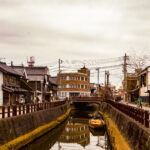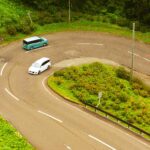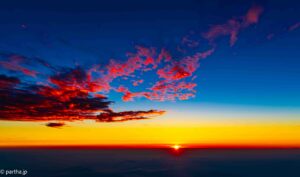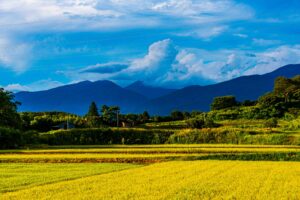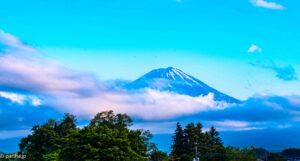
Lake Kawaguchi or 河口湖 is the largest and best known lake around Mt Fuji. However the region has four smaller lakes spread around the area in Yamanashi prefecture. Lake Saiko, Lake Yamanaka, Lake Shoji and Motosu are the other lakes.
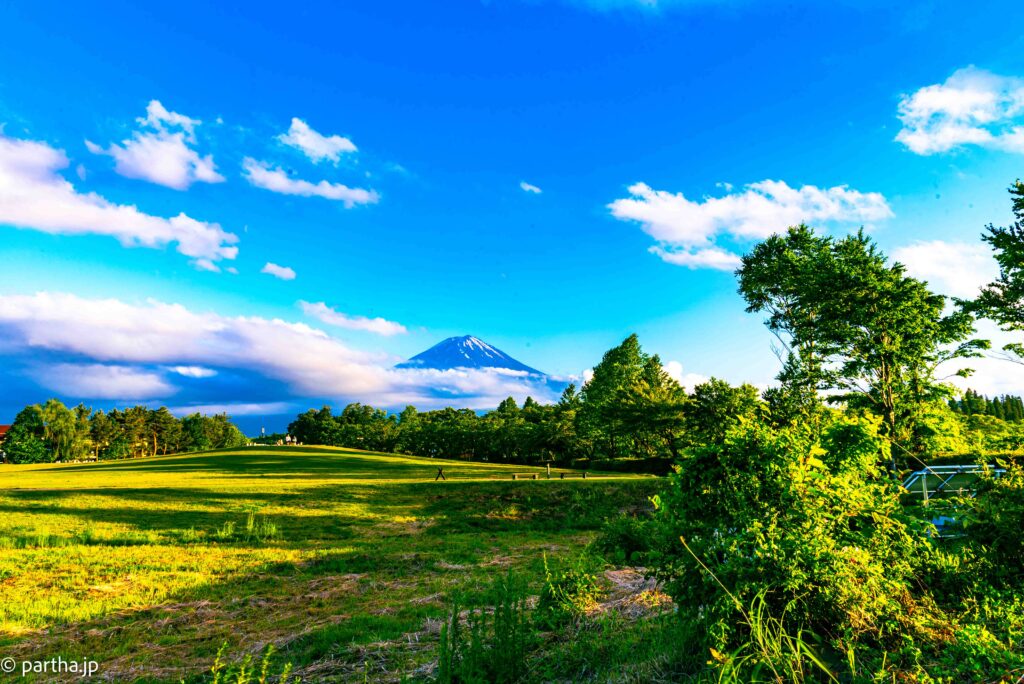
The place is accessible by train, bus and car from Tokyo, the town synonymous with the lake. A 2 hour drive from Tokyo, slightly more on weekends when the crowds head out to the mountains with their bicycles mounted on the cars. There are the odd joggers mostly alone using the lake perimeter as their route.
The drive on weekends takes a bit longer and a stop at one of the service areas is required before we arrived at our destination. The cottage that we booked took a bit longer to find, the lady at the coffee shop next door pointed us to the right direction and a few minutes later we were in.
The cottage was everything we had hoped for, set up on a trailer and detached from the Ryokan. The front porch offered an almost unobstructed view of Mt Fuji and the lake was a few minutes walk away.
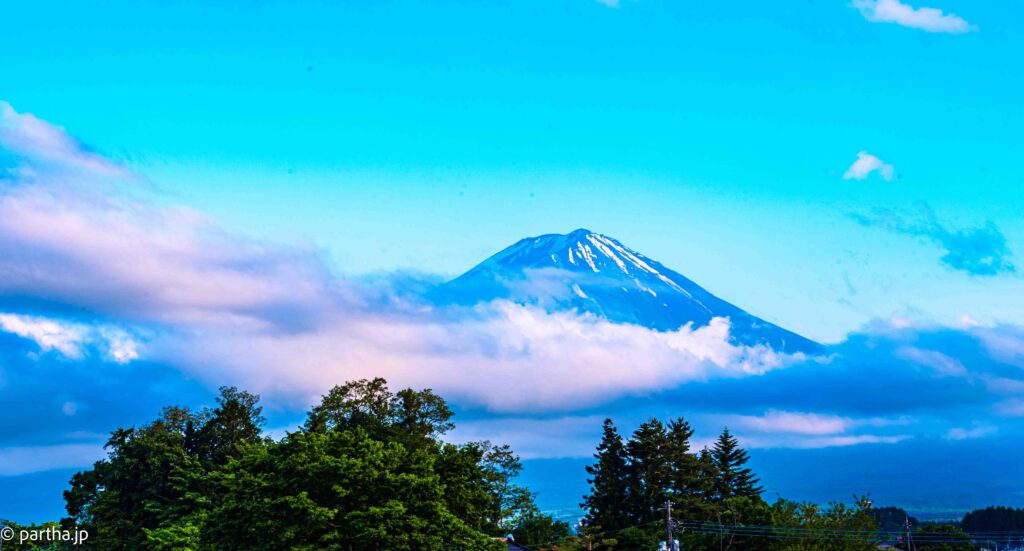
The lakeside is dotted with houses which are rented out to visiting tourists. The word Minpaku民泊 is on a large number of structures around the lake. The never ending stream of cyclists around the lake seem to be prime customers for these accommodations.
If you want to revel in the beauty of nature, the lakeside is more than sufficient. The early summer evening was cool and pleasant and scattered crowds walked around Nogizaki Park 八木崎公園. A lone man played a flute in one of the shelters around the park, people walked their pets and occasionally photographed them. A group of tourists walked around photographing each other. Mt Fuji played peek a boo behind the clouds, visible this moment and disappearing the next.

There are a few restaurants along with lake, however the city centre is a 30 minute walk or a 5 minute drive. The porch was ideal for an evening drink , it got colder at night so dinner had to be indoors.
There are a few quaint attractions around Mt Fuji, the bat, wind and ice caves being the most unique. The caves were created during the Mt Fuji eruptions a few centuries ago.
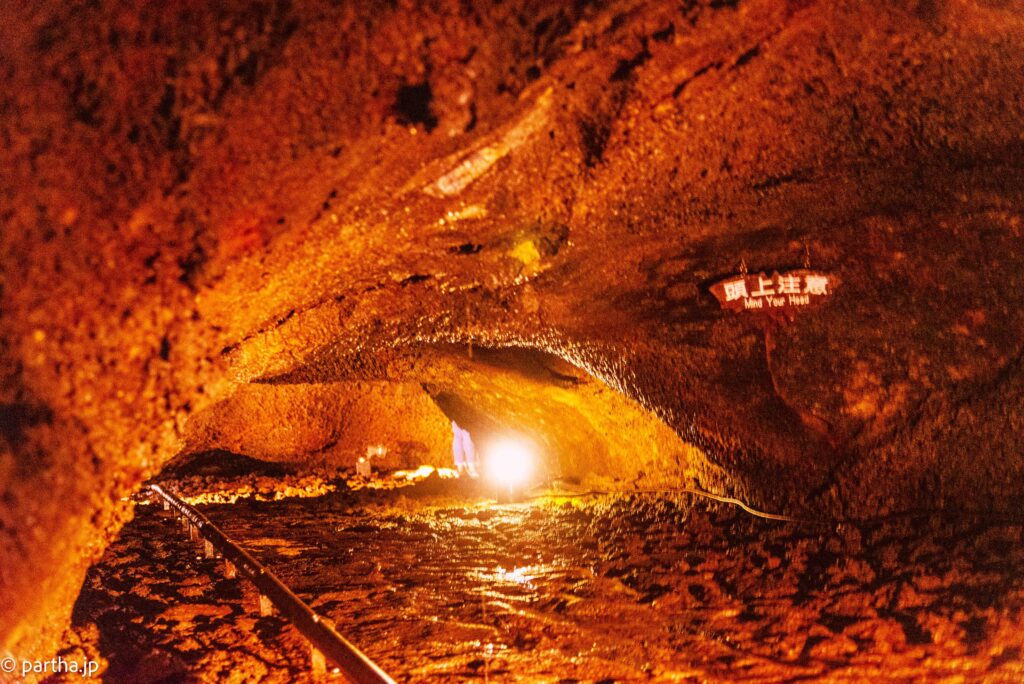
The Bat cave 西湖蝙蝠穴, located close to the Saiko lake was the first stop, a 15 minute drive from the cottage. The cave is spread out with multiple tunnels and some of them require you to frogmarch. The bats are not visible as they occupy the interiors of the caves and the paths open to tourists have lights installed on them. The low ceiling was discouraging and I gave up after a while, walking on my haunches had its limitations.

The Aokigahara forest 青木ヶ原樹海, infamously known as the ’Suicide Forest’ because of the number of people who choose to end their lives there, surrounds the caves. The path leading to the cave is strewn with wooden birches.
The next stop is the Fugaku Wind cave, a 5 minute car ride away. The cave was used as a storage facility for seeds and cocoons due to a constant 3 degrees temperature around the year. This cave has relatively high ceilings and is easier to navigate compared to the bat cave.
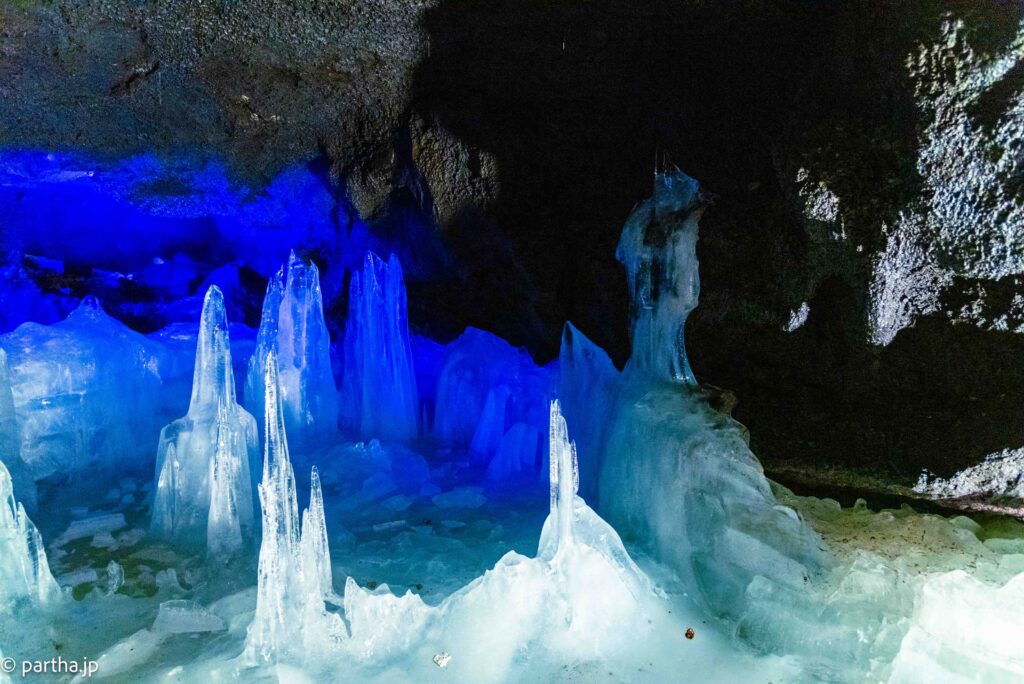
The Narusawa Hyoeketsu ice cave was used to store ice during the early 20th century. The paths are lined with ice blocks and the ceilings low. The path is slippery and a few places requires extra care not to trip.
Tourists crowded the paths and the caves. Since summer rush had not begun one can imagine the crowds in peak season. The best part of the journey is the drive along the lake. The sparse early morning traffic and the 40 kms/h speed limit makes it a pleasant drive without the pressure to speed up.
The Dangozaka Service Area was the lunch stop and a flame grilled pizza wrap was the highlight. The lone person who manned the shop struggled to handle the orders as customers were drawn to the sight of him shooting flames at pizza slices.
There was a Starbucks, a food court and a convenience store in the service area, the Starbucks being the oddity, not common in Service Areas.
The traffic was light till the Tokyo suburbs, congested around Shinjuku and as we cleared it , home looked close.

